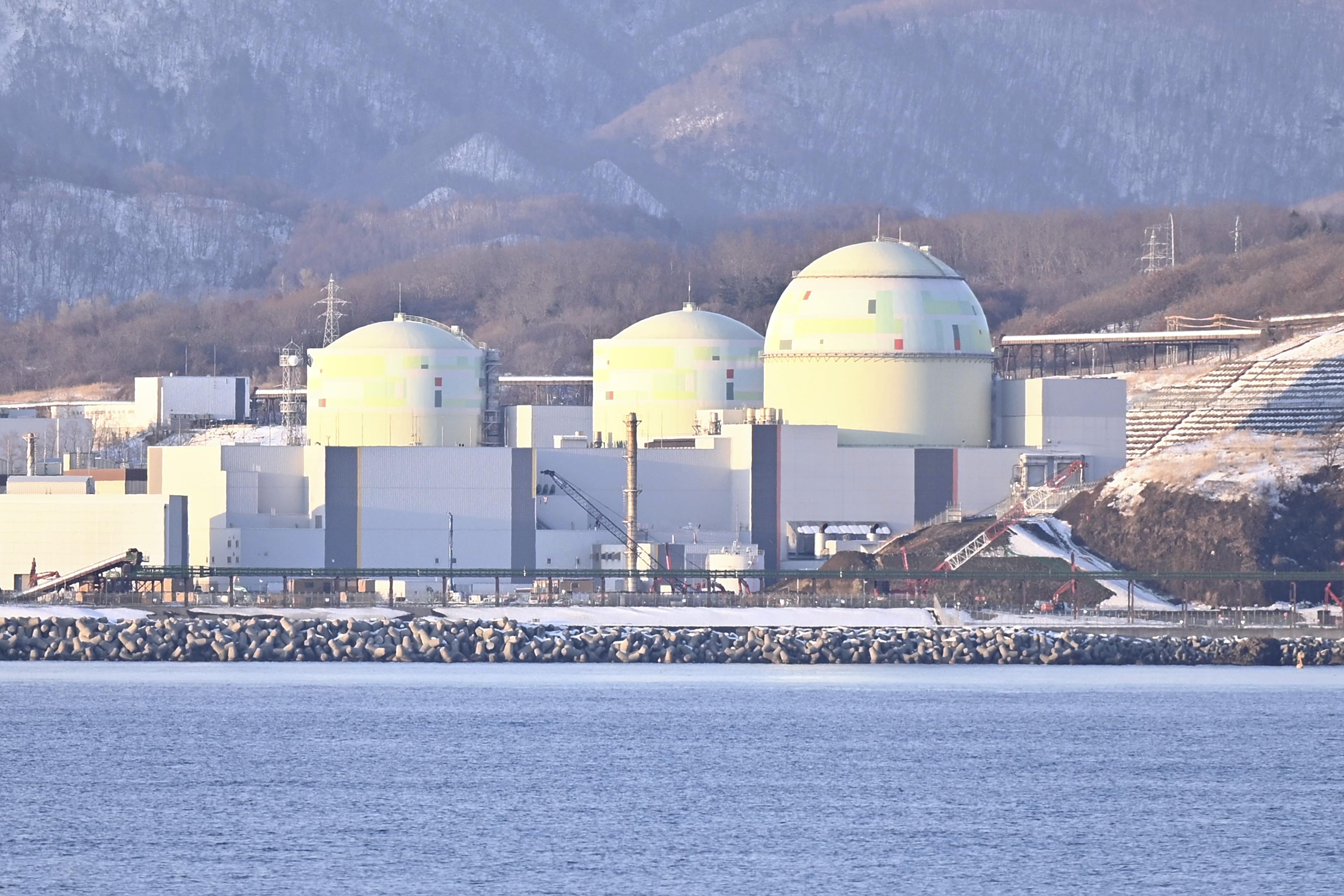
Yomiuri Shimbun file photo
Reactors are seen at the Tomari nuclear power plant, which is operated by Hokkaido Electric Power Co., in Hokkaido in January. The No. 3 reactor is on the right.
15:48 JST, July 31, 2025
The No. 3 reactor at the Tomari nuclear power plant in Hokkaido could be restarted as early as 2027 if local governments approve, according to Hokkaido Electric Power Co. (HEPCO). The company’s reactor passed a safety screening on Wednesday.
The restart would significantly expand the power supply and help meet the rapidly growing demand for electricity in Hokkaido, particularly from data centers and semiconductor factories. The question is whether this will lead to the rebooting of other nuclear power plants across the country.
“We need to make the most of decarbonized power sources so that we can achieve economic growth and decarbonize at the same time,” said Yutaka Fujii, chairman of the Hokkaido Economic Federation, on Wednesday. He had high praise for the Nuclear Regulation Authority’s approval of the reactor’s safety at the Tomari plant. “This is also extremely important for ensuring there is a stable power supply,” he said.
The Tomari Nos. 1-3 plants accounted for nearly 50% of HEPCO’s power supply mix in fiscal 2010 before the 2011 Great East Japan Earthquake. Since the quake, Hokkaido has relied entirely on non-nuclear sources of power, and primarily on thermal power generation.
However, the earthquake that hit southern Hokkaido in 2018 damaged thermal plants, leading to a massive power outage across nearly the entire prefecture and highlighting the difficulty of ensuring a stable energy supply.
SoftBank Corp. is constructing the country’s largest data center in the prefecture’s city of Tomakomai, and hopes to get it up and running by fiscal 2026. In April, chipmaker Rapidus Corp. launched a pilot line at its advanced semiconductor plant in Chitose, and it projects a demand of 100,000 kilowatts for mass production, which could start in 2027.
Nationwide, power demand by 2050 is expected to reach as much as 1.25 trillion kilowatt-hours, about 1.4 times more than before the COVID-19 pandemic. Even if the restart of nuclear power plants proceeds smoothly, there will still be a shortage of over 23 million kilowatt — equal to the output of 23 nuclear plants.
Japan currently has 36 nuclear power plants, including those under construction but excluding the 24 that are set to be decommissioned. Of these, only 14 have resumed operations since the 2011 earthquake. The government, in its 7th Strategic Energy Plan, which was approved in February by the Cabinet, has said it would “maximize the use of decarbonized power sources such as renewables and nuclear power.”
Work to expand nuclear plants, which halted after the earthquake, has also seen a resurgence. Kansai Electric Power Co. announced on July 22 that it would resume topographical and geological surveys in Mihama, Fukui Prefecture, as part of its plan to build a new reactor to replace Unit 1 at its Mihama nuclear power station. Kyushu Electric Power Co. is considering whether to develop innovative, next-generation reactors.


AloJapan.com